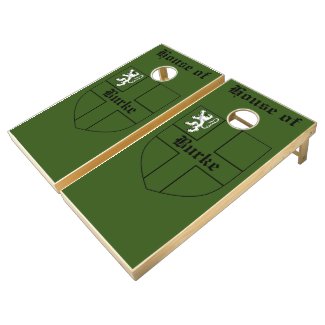How to Play Cornhole, The Bean Bag Tossing Game
Updated October 14, 2020
The Cornhole Game
Cornhole is a simple, fun game that most anyone can play. Of course, the most intense players train for the American Cornhole Association (ACA) Championships, which are held each July in Knoxville. The origin of cornhole varies depending on who you ask, as does the name of the game. You may also hear it called Bags, Baggo, Dad Hole, Corn Toss, Bean Bag, Bean Toss, Soft Horseshoes, Indiana Horseshoes or another variation. Cornhole has been compared to the game of horseshoes, except players use bean bags instead of horseshoes and try to land the bags on a board or in the board goal instead of around a metal post.
The Cornhole Board
An official ACA board is half inch plywood cut into a rectangular, measuring 48" long by 24" wide, with the back end elevated 12”. The front platform of the board is raised 2 - 2.5”. The hole is centered horizontally and 9” from the top of the board and 33” from the bottom. Hole diameter is 6”. The plywood should be smooth and is finished with high gloss latex paint so that the surface is somewhat slippery but not so slippery that bags slide after they have landed and settled. Cornhole bags are 6” x 6” squares filled with corn feed (about 2 cups is typical), weigh 14-16 ounces, and are made with a 12 oz / sq yd duck canvas material.
The Cornhole Court
To allow proper space to play, the court area should measure about 10 feet wide by 45 feet long. The actual plying court is 33 feet long from hole to hole, or 27 feet between the front of each board. Players will pitch/toss bags from the pitching zones adjacent to either side of each board.
How to Play
After determining who goes first (by any house rules or method you prefer), players take turns pitching one bag at a time until all 4 bags have been tossed. In one on one games, players pitch from the same end of the court. In doubles play, a player from each team is on each side, and one player from each team face off at a time in ‘half innings.’ The object of the game is to get as many bags in the hole or at least on the board to score points. Players must pitch with the same hand the entire game - switch pitchers are not allowed by the ACA! Sorry to all of you who live for the opportunity to say “I’m actually not left handed.” Similarly, once a player chooses which pitching zone to toss from, the player must stay on that side of the board to toss. Feet may not cross the pitch line, which is the imaginary line that extends from the front of the board. There is a 20 second time line for each pitch. Bags cannot bounce or hit anything before landing on the board - if they do they are removed from the court area before the next player pitches. The player who scores higher each inning pitches first the following inning, and if no one scores, the player who went second in the previous round would go first, alternating until a player scores.
Scoring
Players get 3 points for every bag in the hole and 1 point for each bag on the board. The winner is the first to reach 21, and winning by two is not required. After an inning, each team’s score is totalled and the lower team’s score is subtracted from the higher team’s inning score - this is called cancellation scoring. For example, if Team A gets 5 points and Team B gets 7 points, then Team B’s overall score increases by 2 and Team B pitches first in the next round.
SKUNK GAME
A player can also win in a skunk game, which is defined by one player reaching 7 points before the other one scores.
Want to up the ante, practicing golf, cornhole, and pong at the same time? Sound too good to be true? It isn't. It's called Putter Pong, so try it. I dare you.
Where to Play Cornhole
Find the best places to play cornhole or join a cornhole tournament on our Cornhole Homepage!


